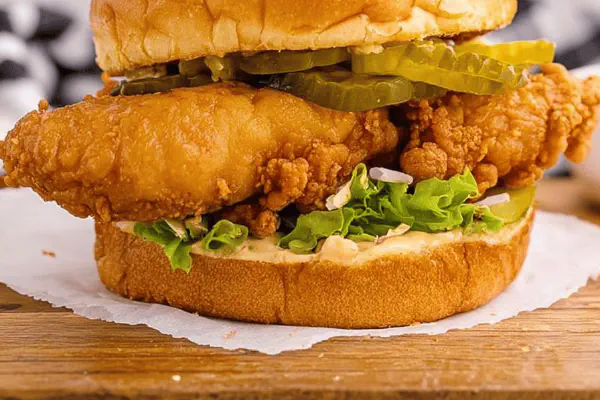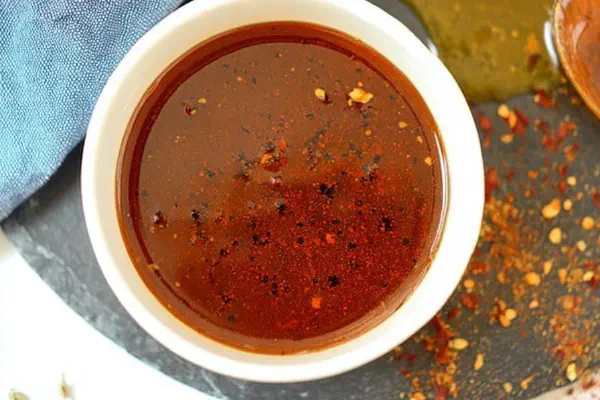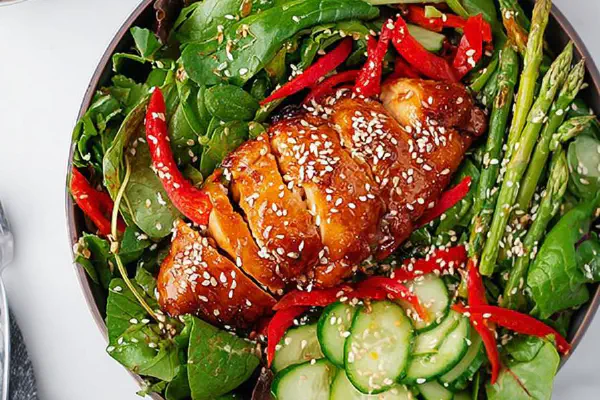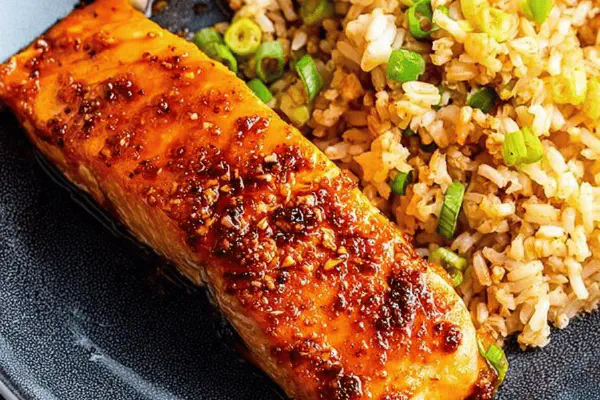Donut Chicken Sampler
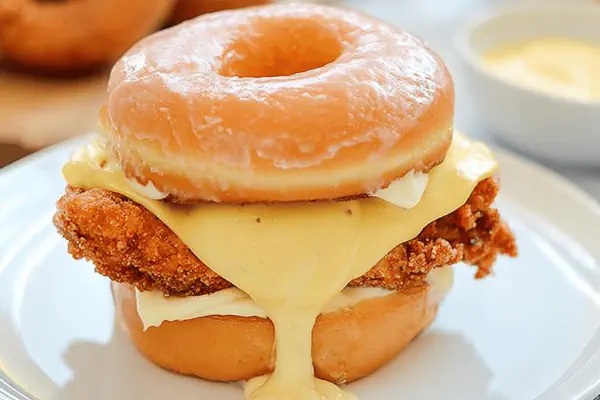
By Emma
Certified Culinary Professional
Ingredients
- 1 glazed yeast donut, split horizontally
- 3 crispy fried chicken tenders, leftover or freshly made
- 3 tbsp maple-Dijon sauce (combine 2 tbsp maple syrup with 1 tbsp Dijon mustard)
- Optional: handful fresh arugula
- Salt and pepper to taste
About the ingredients
Method
Assembly
- Start by removing the top half of the donut gently, take care not to crumble the delicate crust. Use fingers, slight pressure—no knife needed.
- Line base donut half with the crispy chicken tenders. If freshly cooked, listen for that crunch under fingertips; it's worth the rest.
- Generously spoon the maple-Dijon sauce atop chicken. Not honey mustard; this twist adds a deeper complexity, slightly less sweet, more tang.
- Scatter optional arugula for bite contrast, peppery lift in every mouthful.
- Cap with donut top, press slightly to hold but don’t crush the texture balance. A too firm hand and the donut turns into a mess.
Tips and Tricks
- Chicken tender swap over strips for easier inside-the-bite stacking, plus they hold sauce better without sogging donut quickly.
- Maple syrup substitution avoids honey’s overpowering floral scent; Dijon brings zip agreed best here. If in a pinch, regular yellow mustard will do, but miss the spark.
- Donut warmth critical: too cold, dough feels dense, too hot, it melts inside prematurely. Warm at room temp or a quick 10-second zap in microwave is enough.
- Crunch signals—a sonic guide: chicken sizzle ends, aroma sharpens, crust feels firm to touch but not rock-hard—that’s your cue to build.
- Sauce quantity balanced to avoid donut sogginess but still ample for sticky sensation that lingers
- Crunch soft balance: too thick sauce—messy; too thin—flat. Play with consistency.
- Leftover chicken? Reheat in skillet for crisp; microwave kills crunch, ruins texture.
- Add fresh greens for textural complexity; missing that means flat flavor plane.
Cooking tips
Chef's notes
- 💡 Warm donut is crucial. Too cold feels dense, crushes texture. Too hot, melts inside fast. Room temperature or 10-second microwave zap. Watch donut crust integrity; wet sauce or overhandling ruins crisp edge quickly.
- 💡 Chicken tenders work better than strips. They stack neatly, hold sauce without sogging donut. Reheat leftover chicken in skillet for crisp. Microwave kills crunch and texture—no short cuts here.
- 💡 Maple-Dijon sauce mix changes flavor profile from usual honey mustard. Maple syrup adds thicker viscosity not too runny. Dijon brings sharp zip, not floral sweetness. Substitute yellow mustard with stone-ground mix if Dijon missing but lose some punch.
- 💡 Sauce thickness matters. Too thin runs off, sogs donut. Too thick, sticky unmoving mess that chokes layers. Use tiny bowl to adjust consistency, use gentle spoon to drizzle carefully—not drowning chicken or donut base.
- 💡 Crunch fishing cues: listen for chicken sizzle end, aroma sharpens, feel crust firmness. Those signs mean chicken ready—don’t rush or wait too long. Assembly timing affects structural soundness and final mouthfeel.
Common questions
Can I use cake donuts instead?
Cake donuts too dense. Crumble fast under moist toppings. Yeast donuts soften with air pockets, handle moist sauce better. Cake style just falls apart, ruins bite. Better to stick yeast donuts for structure.
What if no fresh chicken tenders?
Leftover works but must crisp briefly in skillet. Microwave nukes crunch, makes chicken limp. If no skillet, try oven broil short but watch fast—they burn easy. Crunch moist balance key to avoid soggy sandwich layers.
How to avoid soggy donut?
Sauce quantity balanced. Too much sauce ruins donut walls fast. Use spoon to drizzle, not pour. Arugula can absorb moisture slightly but adds fresh crisp contrast. Build quickly. Assemble just before eating.
Storage advice?
Best eaten immediately. If not, wrap tightly refrigerated max few hours. Donut softens, chicken loses crisp. Reheat skillet briefly before serving, avoid microwave if possible. No leftovers recommendation due to texture loss.
